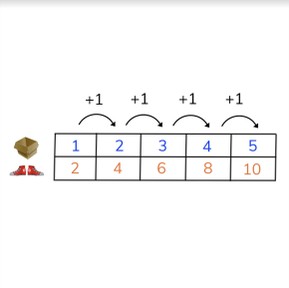
Simple ratio tables with numbers to 10
Students learn to create simple ratio tables with numbers to 10.



8,000 schools use Gynzy
92,000 teachers use Gynzy
1,600,000 students use Gynzy
General
Students learn to create simple ratio tables with numbers to 10. They also learn strategies for dividing and multiplying to complete the ratio table.
Standards
CCSS.Math.Content.6.RPA.3.A
Learning objective
Students will be able to make a simple ratio tables with numbers 1-10.
Introduction
Start by. having a student/students drag pairs of owls to the tree on the interactive whiteboard. Ask students how many owls are in the tree. Then ask how many pairs of owls are in the tree. Ask students to explain their strategy. Next ask a student/students to fairly distribute the bicycles between the houses. You can ask them to todo this in pairs or in small groups. Have them say how many bikes belong at each house. Have students explain their strategy.
Instruction
Explain the importance of ratio tables to the students. Explain to students what a ratio table is, namely a table that shows how many groups you have, and how many of the objects are in each group. Show this using the example with the shoes. Show students how to create a ratio table with the shoes. Explain to students that the number of groups go at the top of a ratio table, and the number in a group goes at the bottom of a ratio table. (You can point out that you can use multiplication to find the number in a group, namely by multiplying the number of groups by the number in a group.) Complete the ratio table as a class. Then show students that it is possible to skip a step in the ratio table, they must solve the missing step in their heads. As a class, practice with the next ratio table and see if students can come up with the missing numbers in the ratio table. Next explain to students that they can determine the number of groups by using division. If they divide the number in the group by the number in one group, they can find how many groups they have. Practice this as a class. Then explain to students that they can use multiplication to find the number in a group, namely by multiplying the number of groups by the number in a group. Have students individually or in pairs solve the following ratio table with numbers missing from the top and bottom rows, and the second ratio table with numbers of groups missing.
To check that students are able to create simple ratio tables with numbers to ten, ask the following questions:
- - What is does the top row of a ratio table tell us?
- What does the bottom row of a ratio table tell us?
Quiz
Students are given ten questions in which they must complete the ratio tables. Some of the questions ask students to take information from a picture, other times from text.
Closing
Remind students why ratio tables are useful, you can for example determine how many shoes you have. Close the lesson by challenging students (individually or in pairs) to complete the given ratio tables before the time runs out. Remind students that they can form multiplication or division problems to help solve for the top or bottom row.
Teaching tips
Students who have difficulty with this learning goal can be supported by recreating the ratio table using math manipulatives like blocks or marbles to physically represent the ratios.
Instruction materials
Manipulatives like blocks or marbles
The online teaching platform for interactive whiteboards and displays in schools
Save time building lessons
Manage the classroom more efficiently
Increase student engagement
Discover more!
About Gynzy
Gynzy is an online teaching platform for interactive whiteboards and displays in schools.
With a focus on elementary education, Gynzy’s Whiteboard, digital tools, and activities make it easy for teachers to save time building lessons, increase student engagement, and make classroom management more efficient.



